Classical Music on YouTube: Hidden and Not-So-Hidden Treasures
For classical music connoisseurs, YouTube has morphed into a virtual museum of music, at once an oasis of archival material, rare recordings, and provocative content. Rare recorded materials, some of them dating back to the early 1900s that were once available only in the dusty archives of a research library, are now instantly accessible, often remastered in pristine condition.
By John Bell Young.
Not that many years ago, when the turntable and diamond stylus faded into history as the CD player emerged victorious, music critics joined ranks and celebrated. At long last, those heavy, clumsily wrapped packages of LPs, obscured by layer upon layer of crenelated cardboard, became mementos of the gaslight era. Much needed space would now be filled, far more efficiently, by a smaller object: the four inch by four inch compact disc. What’s more, my colleagues and I could now turn our backs on scratchy surfaces, damaged vinyl, and that especially heinous vestige of the long playing album: the warp.
How time flies. Today no one is the poorer for the relatively quick turnaround of the Internet, at least where the presentation and distribution of music is concerned. In the late 1990s, MP3.com, a public Internet forum that allowed musicians, amateur or professional, to upload their own recordings, regardless of status, credentials, or even quality, shook up the status quo and changed forever the way music—and classical music, especially—was marketed.
Now anyone could stream or download as much music as a hard drive could tolerate, even in the days when the average consumer had to make do with just 20 gigabytes. (I survived on only 10 gigs for years). Better still, musicians in every genre were given carte blanche to show their stuff in cyber space to a surprisingly curious world.
Nor was it entirely gratuitious; MP3.com saw fit to compensate the musicians who populated its site, drawing on advertising revenues to dole out millions of dollars to thousands of artists, even those who probably didn’t deserve that moniker. One fellow who specialized in the composition of what is disparagingly referred to as elevator music earned nearly a half million dollars in less than two years, an astonishing accomplishment no matter what one might think of his work.
A word to the wise, YouTube continues to police its subscribers and their bounty for copyright infractions, but the hunt has not been perfected. Though music composed before 1923 is in the public domain and thus immune from copyright infringement, the recordings themselves, along with any accompanying images (including video) published after 1923, may indeed remain the copyrighted property of its publishers and thus require permission for both public broadcast as well as for downloading. The Internet and the disposition of recorded materials has made the otherwise clear cut and well regulated area of copyright issues a rather foggy thicket. That does not mean that the recording industry does not take it seriously. Thus downloading may or may not be permissible; if you have any doubts, ask YouTube or the content provider for clarification.
On the other hand, classical musicians, laboring in a genre that continued to see diminishing returns in an environment that favored popular culture, made far less, but still managed to bring in a respectable amount of money; a lucky few among them imaginatively exploited the innovations MP3.com had to offer, peppered their individual MP3.com sites with texts and visuals, and made thousands of dollars.
A lot has happened since the halcyon days of MP3.com, which folded in 2003 amidst a stock scandal and a widely publicized congressional hearing over the abuse of copyrights. Enter YouTube, a technology in its early stages that, while not exactly picking up MP3. com’s dying embers, was at least able to reinvent them. The disillusioned if starry-eyed musicians who had found a home and perhaps promise of better things to come at MP3.com could now offer their intellectual products on video as well or continue to upload audio tracks with accompanying images.
For classical musicians, the procedure was not quite as convenient, given the length of so many classical compositions: a Beethoven sonata, for example, unlike a pop tune, is not over and done with in two minutes; a single movement of a suite or sonata may require a full quarter of an hour or more, thus challenging the demands and ultimately the cost of bandwidth.
But that’s already old news. By 2010 YouTube had long since expanded its bandwidth allowance to a full 15 minutes per upload, and that will likely increase before long. The clarity and quality of the moving image has since become pristine, at least for anyone who has high speed connectivity. Audio quality, too, is likewise distinguished by the digital clarity and resonance that we’ve all become accustomed to.
Given the breathtaking speed that informs technological progress, one can only imagine the range of improvements yet to come. For the average consumer, no matter his musical proclivities, YouTube has evolved into a seemingly endless opportunity of choice.
For classical music connoisseurs, YouTube has become more than that: it has morphed into a virtual museum of music, at once an oasis of archival material, rare recordings, and provocative content. Rare recorded materials, some of them dating back to the early 1900s that were once available only in the dusty archives of a research library, are now instantly accessible, often remastered in pristine condition.
Contemporary instrumentalists and ensembles, too, filmed in concert or professionally recorded in studio, are easily accessible. In an effort to maintain the visual premise that defines YouTube, the providers of these recordings, many of them ardent amateurs, will often render audio recording visually engaging; this they do through the use of photos or artwork. What once cost a hundred dollars or more to buy on video tape from a mom and pop distributor or a private archivist can now be accessed free of charge in seconds. Historical recordings and fuzzy, antique film stock of Alfred Cortot, Jascha Heifetz, or Artur Rubinstein are just as easy to find as a digitally-produced video made of a student piano recital at a suburban music school.
This is precisely what makes YouTube such great fun: if you know what to look for, especially, and even if you don’t, there’s always a surprise in store, even for collectors who thought they’d heard (or seen ) everything.
In the last year alone, I’ve stumbled on to any number of wonderful artists, some young, some old, some famous, and some obscure. Several I had never heard of, which was surprising in light of the many years I’ve been performing and writing about music. Some have been long dead, while others, still young and relatively unknown, are only now beginning to make a name for themselves.
Certainly, were it not for this technology, lesser known but exceptionally gifted artists, who languished for years in obscurity or simply gave up and went into other professions, such as the brilliant pianist, the late David Edward Smith, might never have come to such widespread attention.
Though I haven’t counted, there are thousands of classical music entries on YouTube. So far, I’ve only scratched the surface. I’ve listened to (and viewed) a few hundred recordings there. Listed below are just a few of the especially ravishing selections that I can recommend enthusiastically.
IAN LINDSEY, pianist
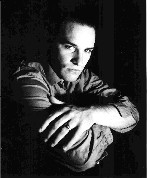 A graduate of the New England Conservatory, pianist and Boston resident Ian Lindsey is a phenomenal pianist. A perfectionist who prefers to remain low key, Lindsey is reported to have turned down an opportunity to record the complete Hungarian Rhapsodies of Liszt for VAI, preferring to live with the works long enough to do them what he considers justice. Mr Lindsey’s Liszt is at once riveting, driven, cogent, and invigorating; for this artist, technical bravura, which so many pianists mistake for substance, is only a means to an end.
A graduate of the New England Conservatory, pianist and Boston resident Ian Lindsey is a phenomenal pianist. A perfectionist who prefers to remain low key, Lindsey is reported to have turned down an opportunity to record the complete Hungarian Rhapsodies of Liszt for VAI, preferring to live with the works long enough to do them what he considers justice. Mr Lindsey’s Liszt is at once riveting, driven, cogent, and invigorating; for this artist, technical bravura, which so many pianists mistake for substance, is only a means to an end.
What Lindsey offers is virtuosity in the service of fantasy and musical storytelling. Indeed, his playing embraces what Vladimir Janeklevitsch amusingly referred to as surabondance. Such is the measure of Lindsey’s gifts in playing that is imaginative, graceful, and eloquent.
Liszt: Impromptu in F sharp major:
http://www.youtube.com/watch?v=swUxO4pAOos
Chopin: Mazurka in A minor, Op. 67 No. 4
http://www.youtube.com/watch?v=PAcVc04erzA
Liszt: Paganini Etude No. 1 (“La Campanella”)
http://www.youtube.com/watch?v=-_wqJqCF9J0
Liszt: Pagainini Etude No. 3
http://www.youtube.com/watch?v=-_wqJqCF9J0
Liszt: Paganini Etude No. 4
http://www.youtube.com/watch?v=dj7550mb6O8
Liszt: Paganini Etude No. 6
http://www.youtube.com/watch?v=-QyxiRndT28
=================================================
ANGELA LEAR, pianist
Cutting a matronly figure at the keyboard, Lear relies neither on glamor or gimmick but compels our attention with her elegant mastery of the music at hand. Here is Chopin playing at its best: supple, luminous, grand, lyrical, and always gracious. Lear, who has committed five CDs to the complete works of Chopin, offers the most perfect performance yet of the magniloquent Barcarolle, whose contrapuntal complexities render it one of the more challenging works in the piano repertoire. Not even Moravec’s or Lipatti’s rightfully renowned readings measure up to this one, where double trills dovetail imperceptibly one into the other, and multiple appoggiaturas are pristinely adjudicated on the beat and without compromising continuity.
Have a listen, too, to her performances, filmed in concert, of the B flat minor Scherzo and the Ballade in A flat. Here Lear exploits every climax as if by stealth, approaching each with the kind of cumulative energy that only genuine authority, mindful of effect and rhythmic nuance, can muster. Especially fascinating are her performances of the etudes, works that ordinarily invite a great deal of noise and bluster. For Lear they are nothing of the sort but emerge instead as individual opportunities for the exploration of contrapuntal textures, which in her hands become exceptionally transparent.
Chopin: Barcarolle
http://www.youtube.com/watch?v=D4HbGGNzvp0
Scherzo No. 2 in B Flat minor, Op. 31
http://www.youtube.com/watch?v=TUhX3bfNMPk
Ballade No. 3 in A flat major
http://www.youtube.com/watch?v=S-Hbpi2qNJc&feature=related
Chopin: Etude Op. 10 No. 1 in C major, Op 10 No. 1
http://www.youtube.com/watch?v=p25fVbBqFSM&feature=related
=============================================================
HUGUES CUENOD, tenor
The renowned tenor Hugues Cuenod, who passed away on December 3 at the age of 108, was to the manner born. A cousin of Winston Churchill, this tall and elegant, Swiss-born singer commanded an instrument at once mercurial and efflorescent. Certainly he took good care of his voice, performing well into his 90s. Indeed, he was in his 80s when he made his debut, as the Emperor in Puccini’s Turandot, at the Metropolitan Opera in New York.
Cuenod was a meticulous musician, one who savored detail but never at the expense of the breadth or teleology of the musical line. For him, affective inflection and thoughtful characterization were the capital of an inspired interpretation capable of communicating with his listeners. That this largely self-trained singer could sustain a single breath ad infinitum was certainly an advantage but hardly the key to his artistic sensibility. Cuenod could sing anything and was equally comfortable with the stage music of his friend Noel Coward as he was with Stravinsky.
Poulenc: Les Ponts-de-Ce
http://www.youtube.com/watch?v=TvRzyjMIHY8
Faure: Mandoline
http://www.youtube.com/watch?v=pGbka_cidkg
Berti: Dove se gita
http://www.youtube.com/watch?v=VrXepearfHg
Poulenc: Six Songs ( accompanied by the composer)
http://www.youtube.com/watch?v=gLzM2SiWjW0&feature=related
Chabrier: Les cigales
http://www.youtube.com/watch?v=eHhEJ29iyhE&feature=related
A tribute to Hugues Cuenod
http://www.youtube.com/watch?v=B6XTcDm4opw
=============================================
LOUIS KENTNER, pianist
This great Hungarian pianist, who was 82 when he died in 1987, was a musical aristocrat who made whatever he played look easy. At once rich and assured, Kentner was a pianist’s pianist. Though revered for his Liszt playing, Kentner commanded in an unusually wide and often unusual repertoire. These rare performances were filmed at one of his last recitals, shortly before his death; it was a private affair in aid of the Liszt Society in London.
Liszt: Three Etudes
http://www.youtube.com/watch?v=hCS4_vz5TZc
http://www.youtube.com/watch?v=xea_ApuHbAU
http://www.youtube.com/watch?v=kk36m_9MH8
================================================
MARK FARAGO, pianist
This superb, young pianist, like Louis Kentner, hails from Hungary. Farago has uploaded more than 100 of his recordings at YouTube, offering highly imaginative and energetic readings of the music of Liszt, Nikolia Medtner, Schumann, Chopin, and others. For some pianists, quantity might not equal quality, but not so in Farago’s case. Farago brings much that is fresh, original, and often fascinating to nearly everything he plays. But nowhere is his playing more compelling than in the music of Liszt. His hypnotic reading of the famous D flat major Consolation is especially touching, while the immeasurable elegance he brings to the ethereal Transcendental Etudes, Chasse Neige and Harmonies du Soir, yields a haunting, disembodied quality that lingers on in one’s memory long after the last notes fade away.
Liszt: Harmonies du Soir
http://www.youtube.com/watch?v=z-GVwamaoGI
http://www.youtube.com/watch?v=K7qHdMkV1uc
Liszt: Chasse Neige
http://www.youtube.com/watch?v=4l5kT44rLS8
Liszt: Consolation in D flat
http://www.youtube.com/watch?v=aGUgcFWV6wo
==============================================
GINETTE NEVEU, violinist
Neveu is widely acknowledged as among the greatest violinists of the twentieth century; her premature death in a plane crash in the Andes mountains brought her career to a sudden and tragic end in 1949, just shy of her thirtieth birthday. She left few recordings, which include sublime readings of the Beethoven, Brahms, and Sibelius concertos, as well as the Debussy violin sonata. All are available on CD on the Music and Arts label.
Astonishingly, someone found and posted to YouTube a rare film clip of Neveu playing Chausson’s Poeme for Violin and Orchestra, a work to which she brought uncommon intensity, and which she recorded in its entirety with Anatol Dorati just month before her death. Her devotees have posted a number of her most notable audio recordings, not the least of which is a live performance of the Brahms Violin concerto, as well as works fo Ravel and Strauss.
Chausson: Poeme (video)
http://www.youtube.com/watch?v=ThHPPOoSAwQ
Ravel: Piece en forme de Habanera
http://www.youtube.com/watch?v=OVd0apnHnNg
Brahms: Violin Concerto (Adagio)
http://www.youtube.com/watch?v=ra5I_k5RGpM
Ravel: Tzigane
http://www.youtube.com/watch?v=-ZdmEBHKBjA
Richard Strauss: Violin Sonata in E flat, Op. 18 : Allegro non troppo
===============================================
DAVID EDWARD SMITH, pianist
One of the great joys of YouTube is the inherent one-upsmanship of the medium itself. For those of us who had been convinced that no artist of substance—no matter the degree of fame or obscurity—had ever failed to register on our musical radar, YouTube proved us wrong.
Thus it was a revelation to discover the extraordinary American pianist, David Edward Smith (1924–2004). Smith had been on the verge of a major career in the 1940s, earning glowing accolades in the New York Times and the Washington Post, and most important, from his colleagues, who regarded him as a pianist worthy of the artistic and international stature of Dinu Lipatti and William Kapell, each of whom briefly enjoyed international celebrity before their premature deaths in the 1950s.
Smith didn’t die young, but, for reasons that remain unexplained, he abandoned the piano suddenly, giving up what surely would have been a stellar career in favor of becoming a forest ranger. But he never stopped playing entirely, performing at modest venues and on the college circuit every now and then. Nor did he abandon what might seem an incongruous indulgence for a concert pianist: a love affair with the blues. He penned several compositions over the years in that genre and did so with impeccable taste, originality, and just the right amount of melancholy.
A few years ago Smith’s son, an attorney, released his father’s extant recordings on YouTube, including a video of the pianist in concert in the 1980s. Smith’s deftly detailed performances of Chopin (the B minor sonata, the A flat polonaise, the E minor concerto in a two-piano arrangement), Debussy (L’isle Joyeuse), and Rachmaninoff (Prelude in E flat minor) are remarkable for their sweep and audacity.
Smith consistently rejects superficial virtuosity, preferring to dig deep into musical textures as he elaborates one contrapuntal melody after another. Indeed, Smith understood perfectly just what a contrapuntal melody was all about: a single melodic line that contains within itself more than one voice, that is, an implicit multi-voice dialogue. Smith was hardly a pianist to bring out unusual or “hidden” voices without purpose. Instead, his listening apparatus was so pristine as to discern contrapuntal relationships in even the most famous musical warhorses that had somehow escaped other interpreters.
Debussy: Reflets dans l’eau
http://www.youtube.com/user/creativebna#p/u/28/ZCGUVJuYIEY
Debussy: L’isle Joyeuse
http://www.youtube.com/user/creativebna#p/u/41/1HQu2ta7SUU
Rachmaninoff: Oriental Sketch
http://www.youtube.com/user/creativebna#p/u/35/n79J07sF5jQ
Rachmaninoff: Prelude in E flat minor
http://www.youtube.com/user/creativebna#p/u/37/0S8Nf4NLbVw
Chopin: Etude in C minor, Op. 25 No. 12
http://www.youtube.com/user/creativebna#p/u/32/1WD0U8-rcRE
Chopin: Grand Valse Brilliante
http://www.youtube.com/user/creativebna#p/u/31/0bkFFsrjF6A
Chopin: Polonaise in A flat major, Op. 53
http://www.youtube.com/user/creativebna#p/u/18/SD6SgZxXRn4
Bizet-Horowtz: Variations on a Themes from Carmen
http://www.youtube.com/watch?v=fDdFgUhjLEg
David Edward Smith: Plenty Blue
David Edward Smith: Ain’t it a Shame
http://www.youtube.com/user/creativebna#p/u/9/sdVnpKs8XnI
=============================================
LAWRENCE BROWNLEE, tenor
Fans are sometimes given to making exaggerated claims. Though I had heard good things about Brownlee as a rising star—praise critics hear only too often about many young artists—I had never actually heard him. While reading listeners’ comments on YouTube about another singer, I was struck by the matter-of-fact tone of one proto-critic who was adamant in his uncompromising belief in Brownlee’s artistic superiority. Of course, no matter how well or ill-informed, criticism is omnipresent on YouTube. Still, when I listened to Brownlee, I had to concur completely.
He is essentially a lyric tenor with a spinto’s soul, that is, a voice that combines flexibility with real dramatic power, something just short of a Heldentenor. Indeed, here is a singer who combines the best vocal qualities of Pavarotti (without the narrowing pinch in the upper range) with the silvery, clarion quality of Nicolai Gedda. To be sure, Brownlee’s sensibility is Italianate but also stentorian. In Liszt’s Sonetto 104 del Petrarca, a work the composer later refashioned for solo piano, Brownlee’s interpretive authority and vocal mastery is second to none. Never mind the opulence, finesse, and autumnal colors that he manages to coax so effortlessly out of his memorable voice or his ability to ordain ornamental passage work with visceral intensity. These are only secondary to something even greater: an overwhelming joie de vivre that soars with the majesty of an eagle in flight.
Liszt: Sonetto 104 del Petrarca
http://www.youtube.com/watch?v=c8ii2cUAje0
Donizetti: Tonio’s aria from La fille du Regiment
http://www.youtube.com/watch?v=lXCwukCdWmg
=====================================================
MARGARITA FYODOROVA, pianist
I am more than a little predisposed towards Margarita Fyodorova; I studied with her for years in Moscow and have also performed with her in two-piano recitals in Russia and the USA. Fyodorova, now in her late eighties, has long been recognized as one of her country’s greatest pianists, a leading interpreter of Bach, Shostakovich (who she knew well), and especially Scriabin.
Her recording of the Scriabin piano concerto, now available on YouTube, was made for Melodiya Records in the early 1990s, just shy of the collapse of the Soviet Union. It was never released. While Boris Yeltsin was making pronouncements atop an automobile in Red Square, Melodiya was dissolved, leaving this stunning collaboration on the cutting room floor. Suavely accompanied by conductor Fuat Mansurov and the Moscow Radio Symphony, this opulent reading deserves a moniker all its own: definitive.
Few, save her renowned teacher Heinrich Neuhaus (who also taught Richter and Gilels), can match Fyodorova for the wealth of affect and expressive articulation that she brings to every corner of this work. A magnificent Chopin interpreter as well, her performances of the F minor Fantasy and the G minor Ballade are no less impressive, lending to her performances a musical mystique that her Russian colleagues and audiences have long recognized and sincerely cherished.
Scriabin: Piano Concerto in F# minor
http://www.youtube.com/watch?v=SFjxfXX6x2c
http://www.youtube.com/watch?v=o-DY8YgjE-k
http://www.youtube.com/watch?v=8yyOPiCG0jg
Scriabin: Poeme Tragique
http://www.youtube.com/watch?v=Os_nVHqwE8I
Chopin: Fantasy in F minor
http://www.youtube.com/watch?v=WOamvyyt7Z8
Chopin: Ballade in G minor, Op. 23
==========================================
EILEEN FARRELL, soprano
The endearing, alluring, and altogether impassioned singing of the late Eileen Farrell reminds us all what a privilege it was to grow up in the second half of the twentieth century. Farrell, who passed away in 2002, is a model of restrained power and elegance in Wagner’s “Mild und Leise” from Tristan und Isolde, while in Poulenc’s ever so sultry “Hotel” from Banalites, she offers an object lesson in vocal characterization.
In one of his stage plays, Noel Coward once opined “how potent cheap music is.” Well, though a tune as endearing Harold Arlen’s Somewhere Over the Rainbow may be popular, it is hardly cheap; just ask the eminent Yale theorist Alan Forte, who devoted an entire study to the song. Sure, everyone knows that Judy Garland, a magnificent popular songstress in her own right, owned it, and rightfully so. But just have a listen to Farrell as she infuses this evergreen with moving and unforgettable ardency in a performance that was only marginally credited to her; it is Farrell’s voice that is heard as actress Eleanor Parker performs it in her affecting portrayal of Marjorie Lawrence in the 1955 film Interrupted Melody.
Poulenc: “Hotel”
http://www.youtube.com/watch?v=s4kKs-Wfvy4
Arlen: “Somewhere Over the Rainbow”
http://www.youtube.com/watch?v=FpkD-6a6lzY
Wagner: “Mild und Leise” from Tristan und Isolde
http://www.youtube.com/watch?v=Etw5sdLa0Qg&feature=related
====================================================
BENNO MOISEIWITSCH, pianist
For piano music devotees, Moiseiwitsch (1890–1963) needs no introduction. Born and trained in the Ukraine, Moiseiwitsch spent much of his life in England, becoming a British citizen in 1937. A giant even among the greatest pianists of the twentieth century, his playing was invariably elegant, informed, and stylish but never superficial. A friend of Rachmaninoff, he was also among that composer’s leading interpreters. Though he recorded prolifically, that he also left behind a number of performances filmed in the 1940s and 50s is a rare treat indeed, one that every piano devotee and student can grateful for.
Rachmaninoff: Concerto No. 2
http://www.youtube.com/watch?v=d0-gA4sOlZI
Rachmaninoff: Prelude in B minor
http://www.youtube.com/watch?v=fjlltDlJSQQ&feature=related
Schumann: “Traumerei”
http://www.youtube.com/watch?v=y8fk8bF6pfM
Schumann: “Warum?” (from Fantasiestucke Op. 12)
http://www.youtube.com/watch?v=rrCdeBncBu0&feature=related
Liszt-Wagner: Overture to Tannhauser (Parts 1 and 2)
http://www.youtube.com/watch?v=GF9o5W0fwQc
http://www.youtube.com/watch?v=_OpnfMmau28&feature=related



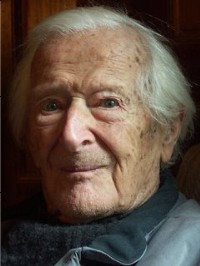
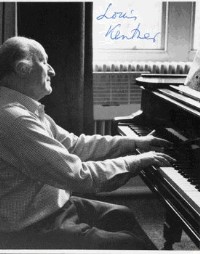
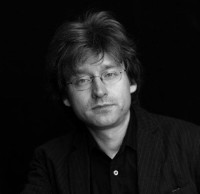
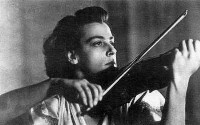
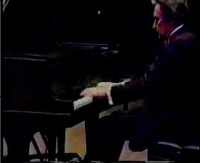

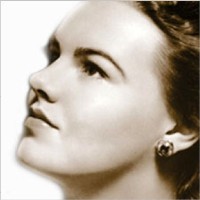
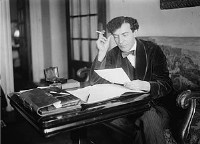
Although I’m certainly not a musician, I was surprised and delighted to find Angela Lear here. There is a relatively long history of my love for Chopin (and a personal one, too) and after listening to the best-known artists I found constant disappointment in some of the phrasing and virtuosic fireworks. After discovering Angela I was astounded to find a Chopin that was unknown to me. The history of his physical suffering fell away, and all the inuendo that has dogged this enigma for so many years. What was
left was a genius of incomparable delight – intriguing the listener with his mastery of mathematics and a God given soul in flight. How incredible to find the perfect understanding of this artist who so portrays the whole scene, rather than the tantalizing bits and pieces that had frustrated my enjjoyment of listening for so many years. Thank you so much for also finding Angela Lear and putting her in a place of honor where perhaps other listeners will find the same priceless gifts she has given me in her playing.
It is a delight to meet these “new” artists who also meet with your approval.